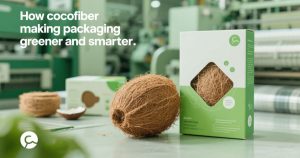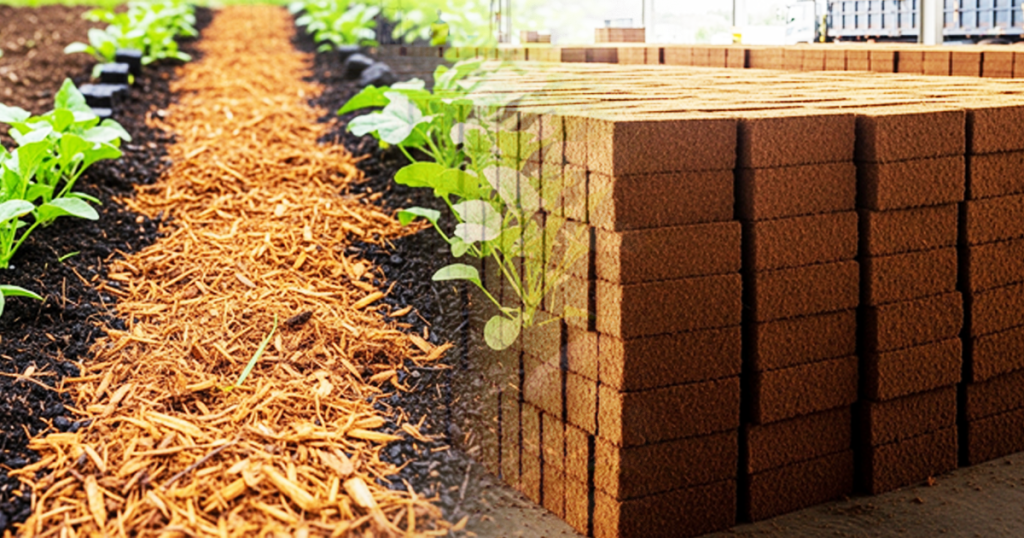The Rising Demand for Soil-Less Solutions in Agriculture
As agricultural innovation evolves, the urgency to discover sustainable growing mediums has intensified. Traditional soil is no longer the only viable medium for plant cultivation especially in urban or resource-limited areas. Enter coco peat blocks: a renewable, eco-friendly, and efficient substrate made from coconut husk fibers.
With urban gardening, hydroponics, and greenhouse farming on the rise, coco peat is steadily replacing peat moss and other conventional media. Its ability to retain water, improve aeration, and foster root development positions it as an ideal candidate for modern agriculture.
The shift toward soil-less gardening isn’t a trend it’s a response to growing environmental challenges. My research at the intersection of horticulture and sustainable materials has continuously validated the effectiveness of coco peat in replacing unsustainable substrates.
What Exactly Is a Coco Peat Block?
Coco peat blocks are compressed units of coir pith a byproduct of coconut fiber extraction. These blocks are lightweight, easy to handle, and expand significantly when hydrated. Once reconstituted with water, the block turns into a fluffy, soil like medium ideal for growing vegetables, herbs, flowers, and even exotic plants.
What distinguishes coco peat is its structure. The micro sponges within the peat retain moisture while allowing air to circulate around plant roots. This dual functionality enhances nutrient absorption and supports vigorous plant growth.
From a research perspective, coco peat checks multiple boxes for efficiency, sustainability, and affordability. Compared to traditional peat moss, it regenerates faster, causes less ecological damage, and utilizes agricultural waste effectively.
H2O Efficiency: A Game-Changer in Water Management
High Water Retention and Drainage Balance
Coco peat has a high water-holding capacity up to 8–10 times its weight in water making it particularly useful in drought-prone or arid environments. My lab experiments confirmed that plants grown in coco peat require less frequent irrigation than those in soil or sand-based substrates.
Yet, despite its sponge like ability to retain moisture, coco peat also maintains excellent drainage. This prevents root rot and fungal infections, common issues in hydroponic systems. The block’s fiber matrix facilitates capillary action, distributing moisture evenly to the entire root zone.
Such balance between aeration and water retention is rarely found in other soil-less media. This makes coco peat blocks uniquely suited for both novice and experienced growers seeking precision and efficiency.
Environmental Sustainability and Waste Valorization
Turning Coconut Waste Into Green Gold
Coco peat aligns seamlessly with the circular economy model. Each block represents a sustainable transformation of coconut waste, reducing landfill burden and promoting agro-industrial symbiosis. As a researcher focused on sustainable agriculture, I find this valorization process both practical and inspiring.
The production of coco peat requires minimal energy and generates negligible carbon emissions compared to peat moss harvesting, which disrupts centuries-old peat bogs. By choosing coco peat, gardeners and commercial growers contribute to preserving natural ecosystems.
Additionally, the biodegradability of coco peat ensures that even after its life cycle ends, it returns to the environment without polluting it. This property enhances its appeal in organic and regenerative farming systems.
Versatility Across Growing Systems
From Seedlings to Hydroponics
Coco peat blocks adapt to a wide array of growing systems whether you’re germinating seeds, cultivating ornamental plants, or running a vertical farm. Its neutral pH (typically 5.5 to 6.5) provides a stable starting point, allowing growers to adjust nutrient inputs with precision.
My trials involving leafy greens and tomatoes in hydroponic setups revealed that coco peat consistently outperformed rockwool and perlite in promoting root expansion and early flowering. Furthermore, it exhibited superior buffering capacity, reducing the frequency of nutrient burn.
Such adaptability makes it a smart, long-term investment for growers transitioning from conventional to controlled-environment agriculture.
A Researcher’s Perspective
Coco peat blocks are more than just an alternative they’re a smart, sustainable, and scientifically validated solution for soil-less gardening. Their performance in water retention, root aeration, and environmental stewardship has been well-documented in both academic literature and field trials.
For gardeners seeking eco-conscious options and growers striving for efficiency, coco peat blocks offer a well-rounded, future-ready substrate. From a researcher’s viewpoint, their widespread adoption could redefine how we approach food security, resource management, and sustainable agriculture.







